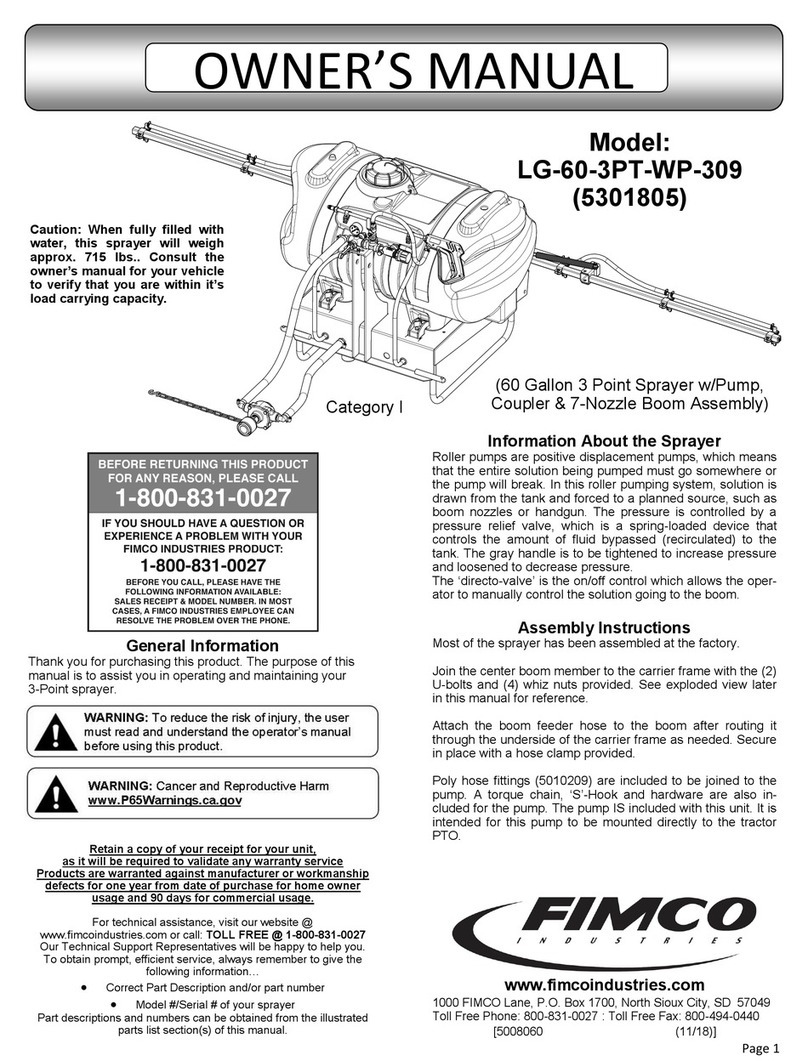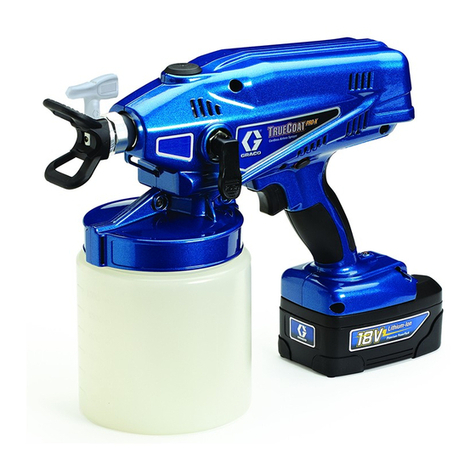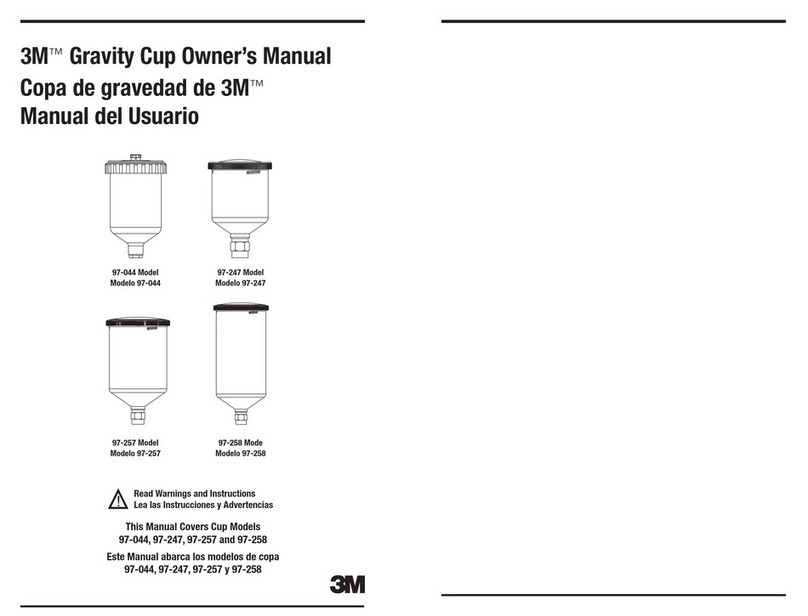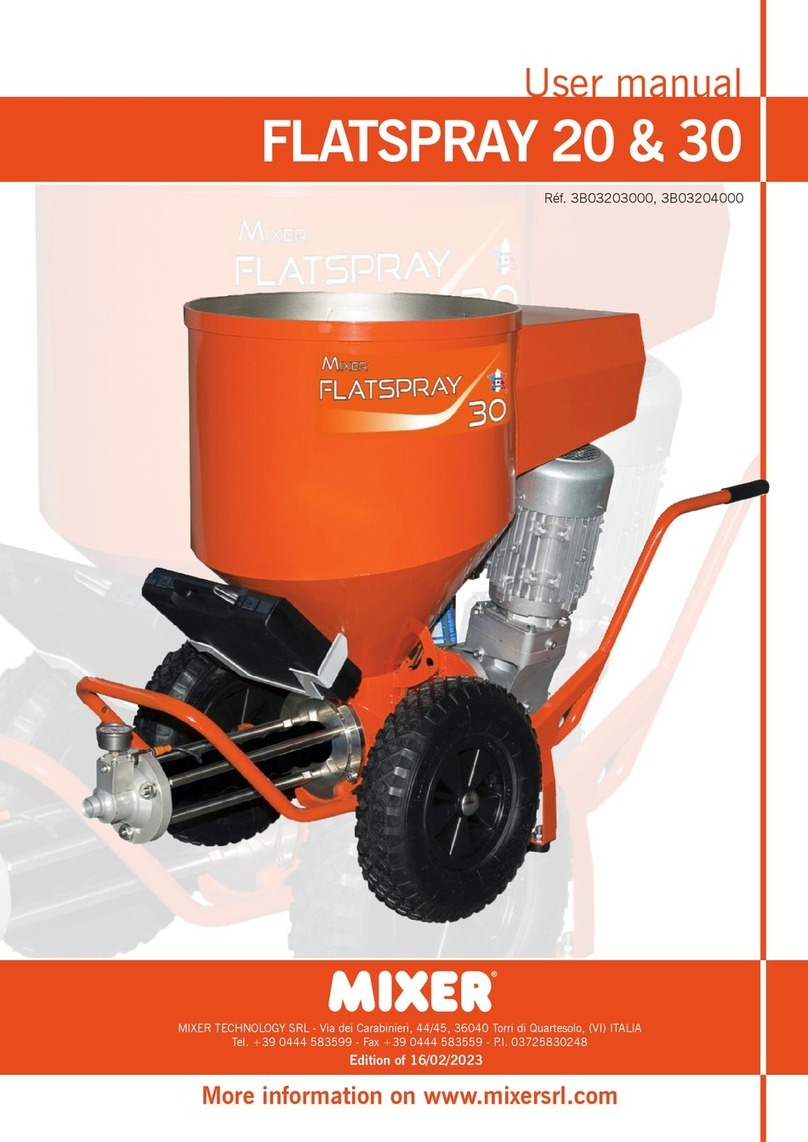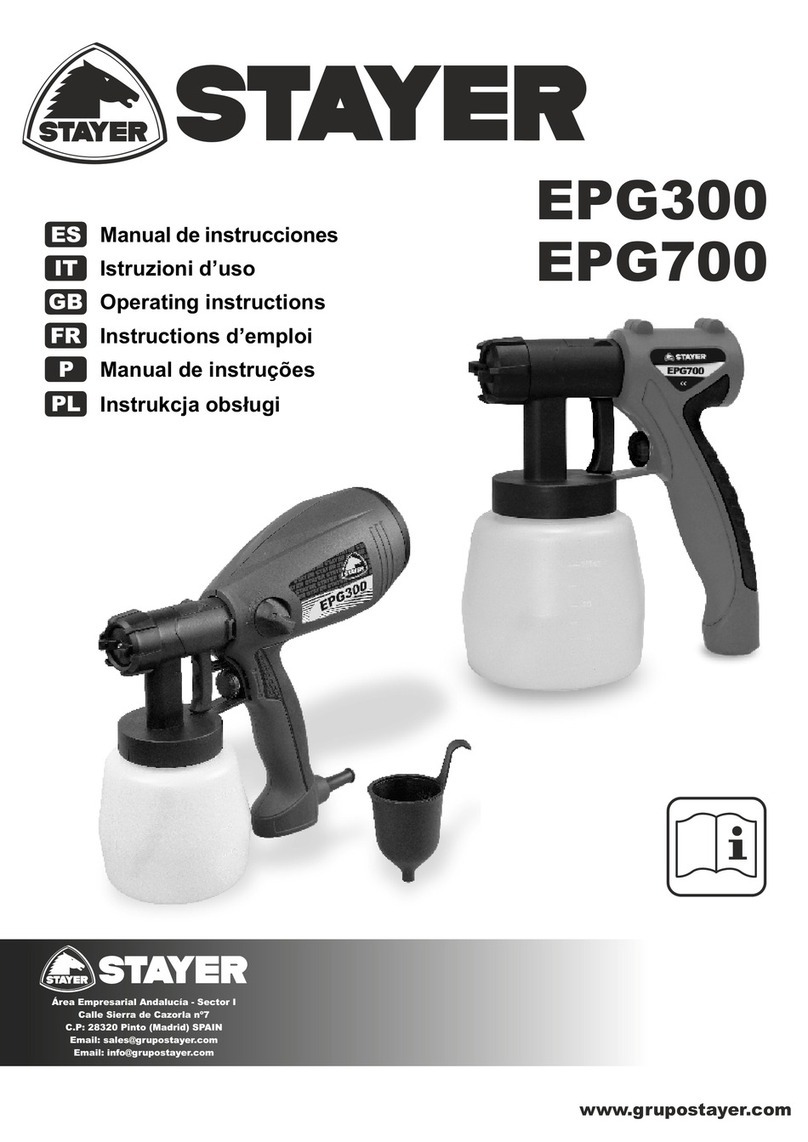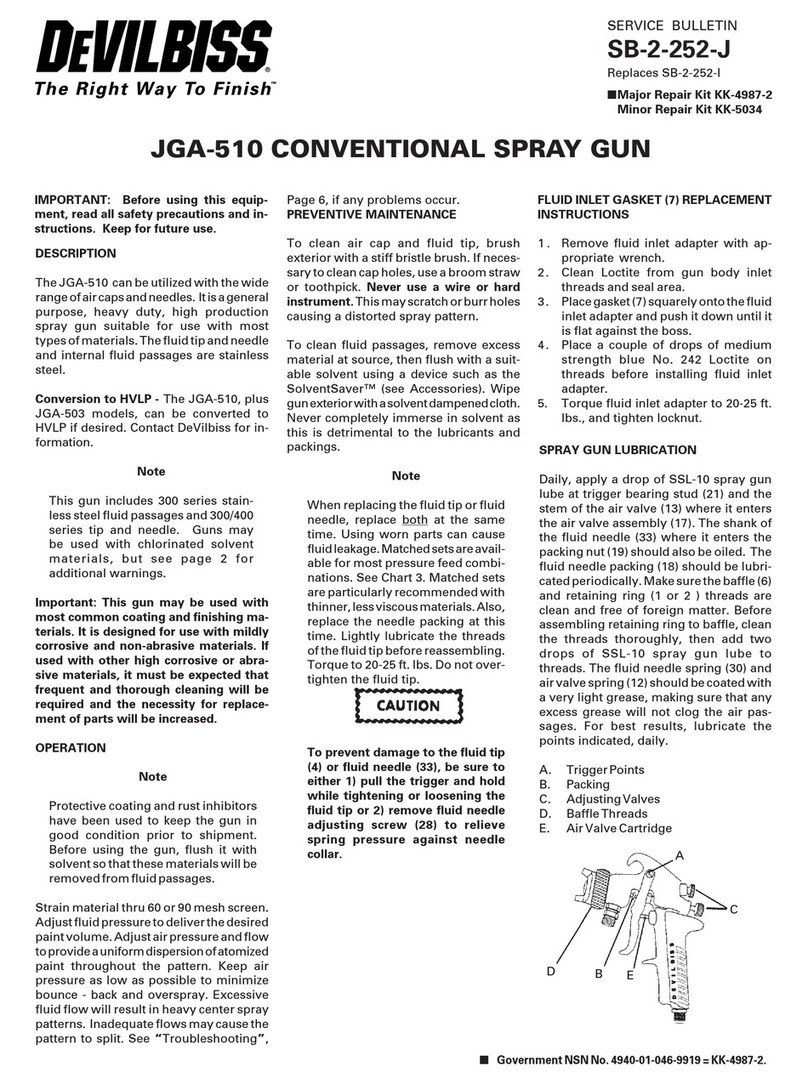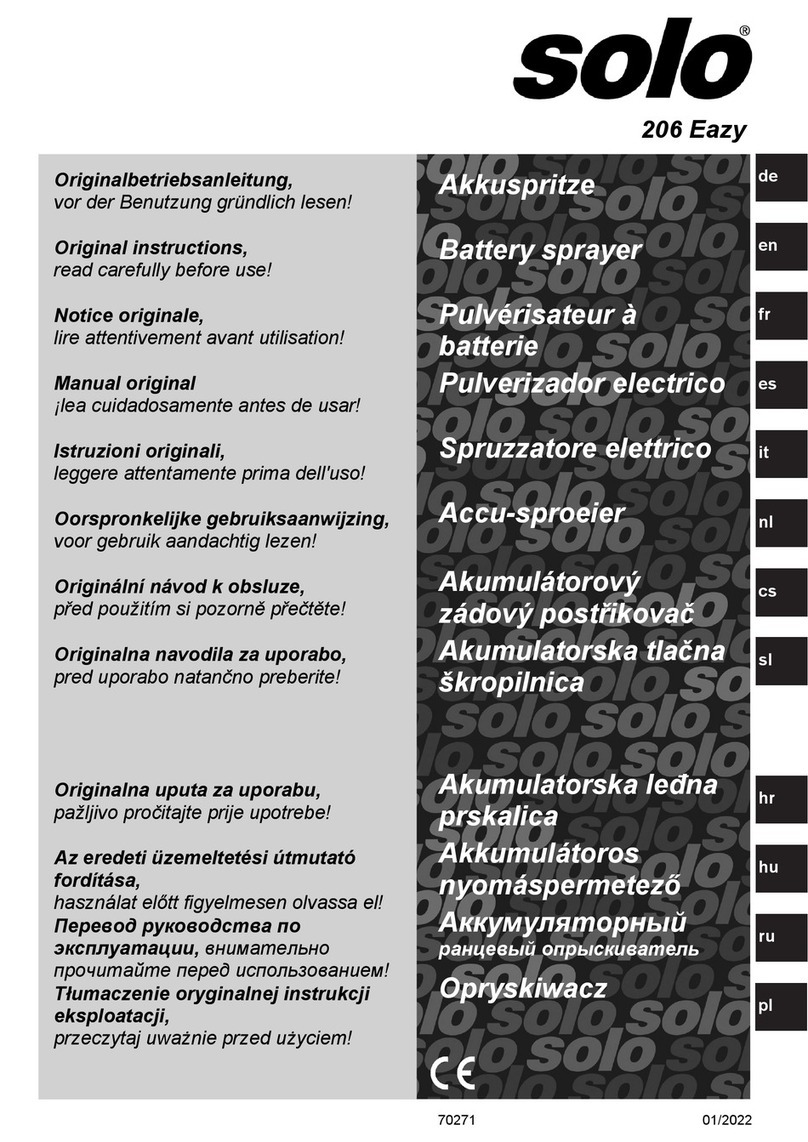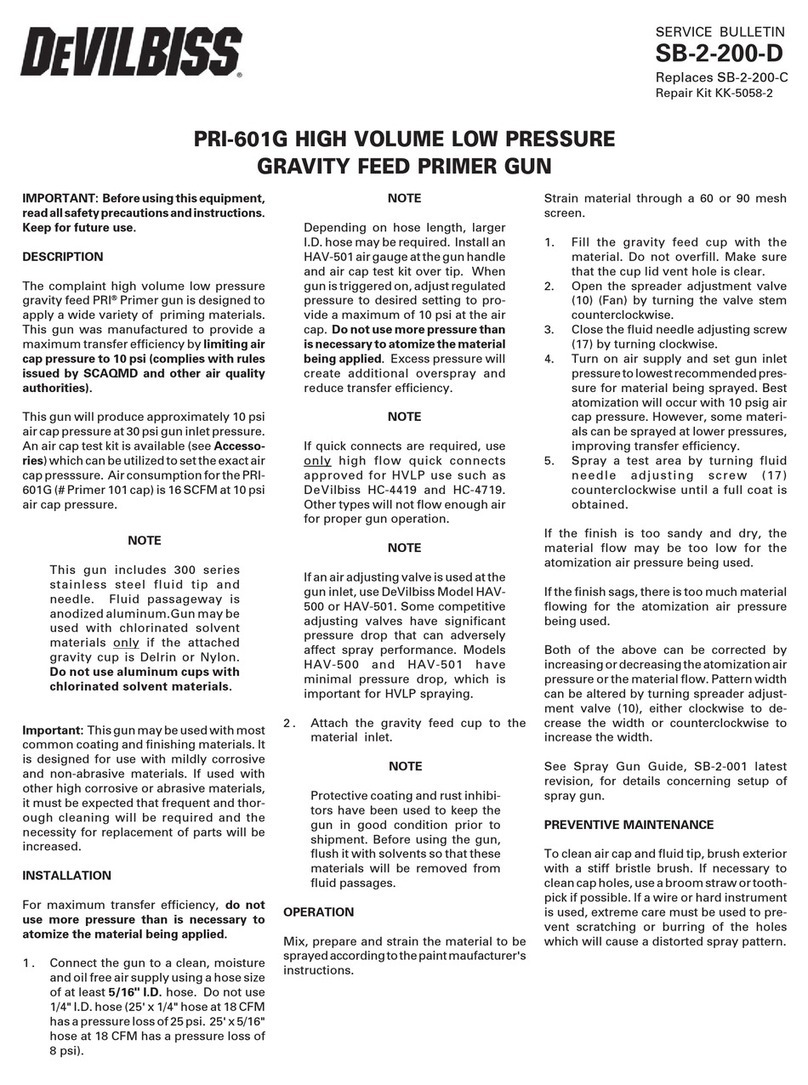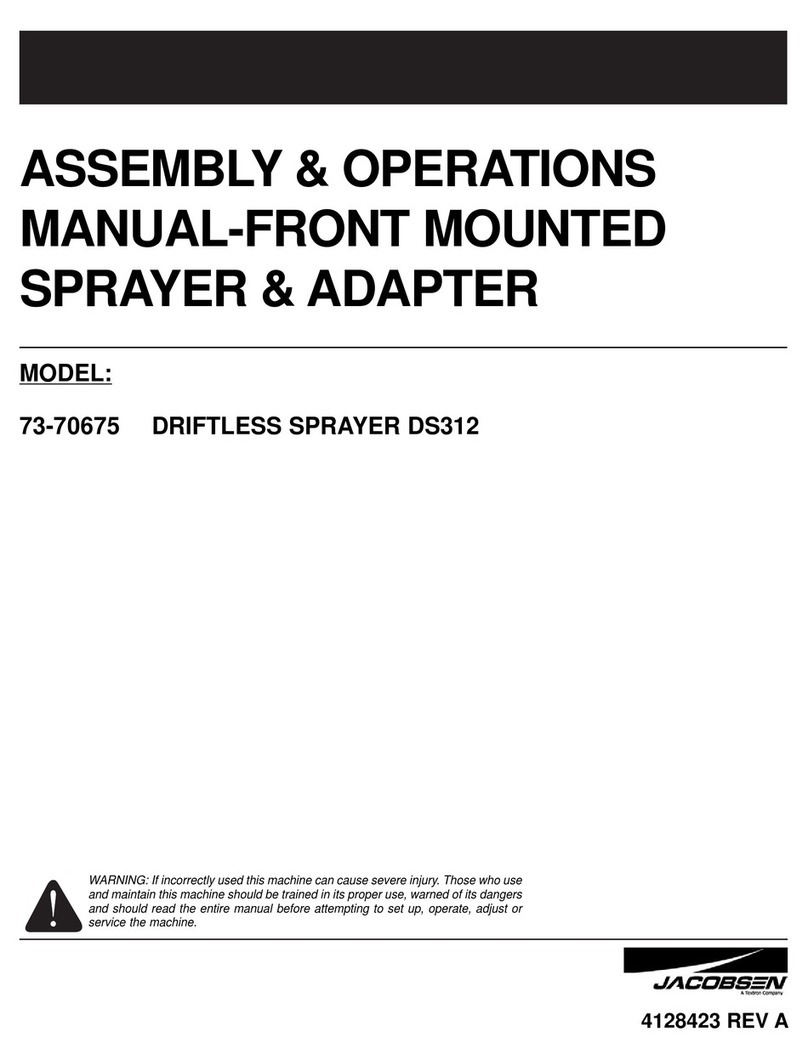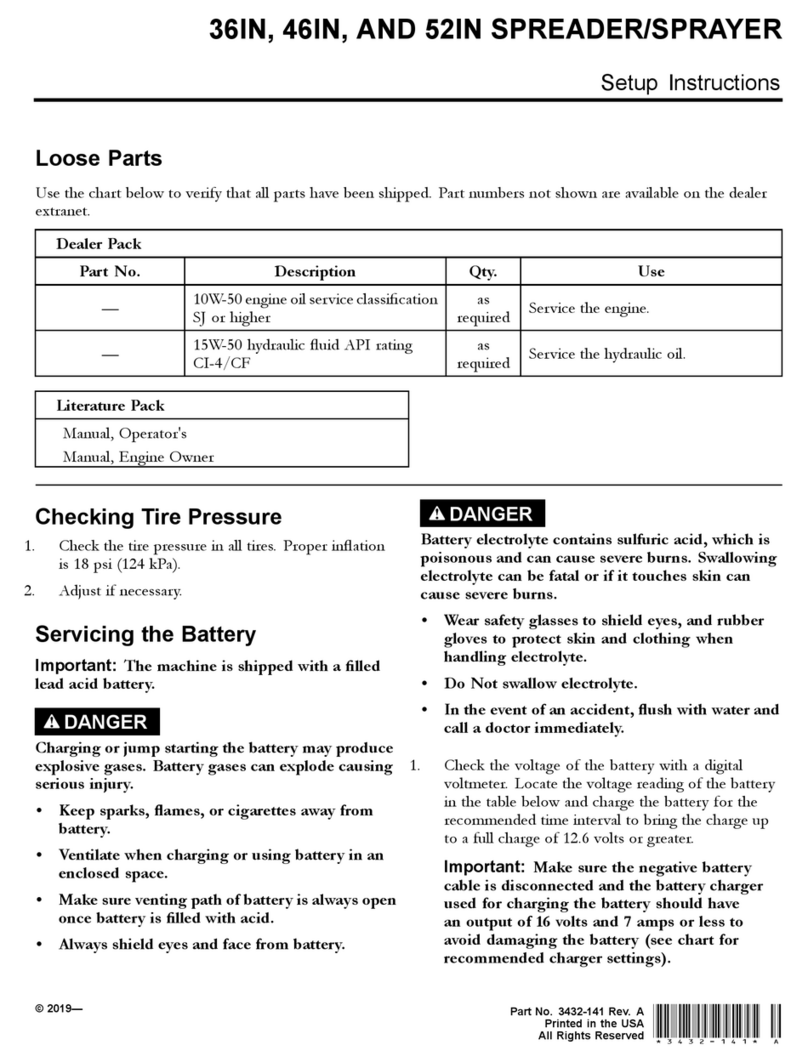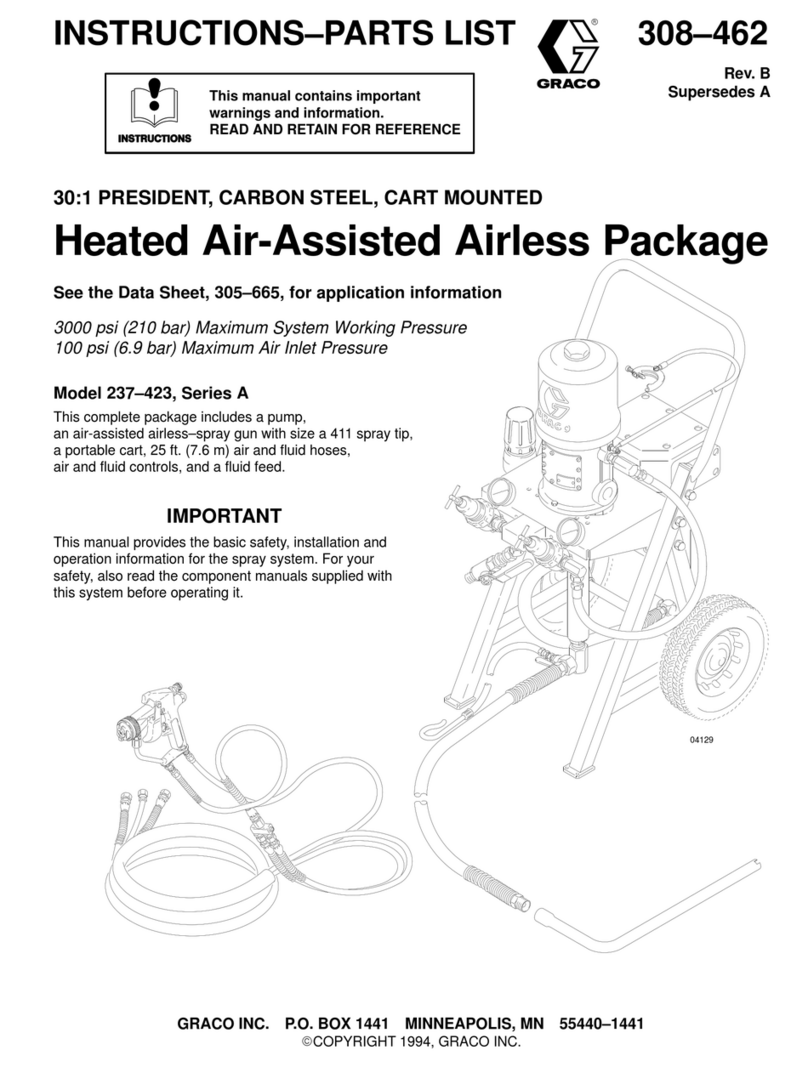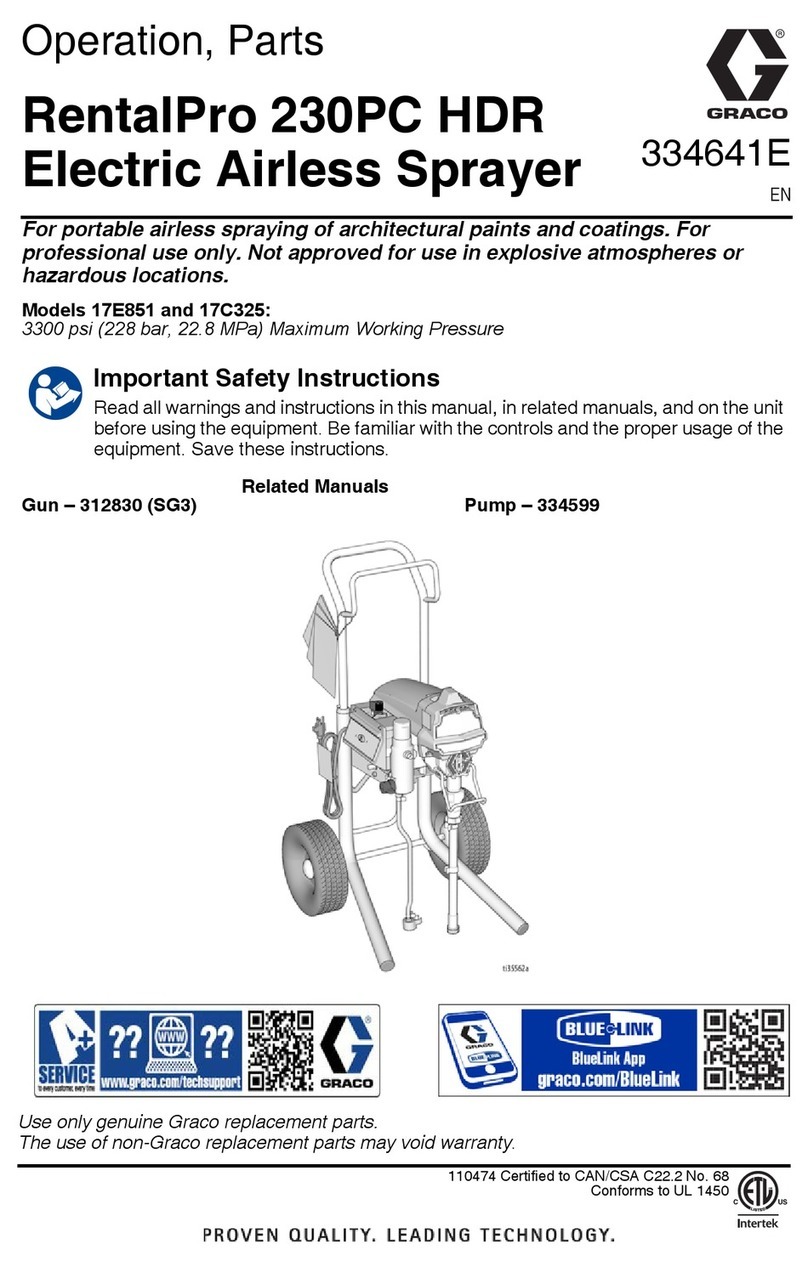Strom 720QA101 User manual

18V Lithium-ion BACKPACK sPrAyer
operation manual
800-345-1960
PART# 720QA101


3

4
PRODUCT SPECIFICATIONS
Model No.: QA101
Input: 18V
Battery type: Lithium-ion
Lithium-ion battery capacity: 2600 Ah
Charger input: Input 100/240volt 50/60Hz.032Amp.
Output 21 volt DC 1.0 Amp.
Tank capacity: 4 Gallons (15 Liters)
QUALITY STATEMENT
This product has been engineered and manufactured to our high standards for
dependability, ease of operation, and operator safety. Properly cared for, it will
give you years of rugged, trouble-free performance.
WARNING: READ MANUAL BEFORE USE
WARNING: To reduce the risk of injury, the user must read and understand the
operator’s manual before using this product.
Battery must be fully charged before first use.
RETAIN THIS MANUAL FOR FUTURE REFERENCE.
Thank you for your purchase.
IMPORT SAFETY SYMBOLS AND EXPLANATION
Warning notice
Read the Owner’s manual
Do not expose the sprayer to rain or submersion
Only use the battery charger indoors
Battery charger contains a safety transformer
If you need assistance with the
assembly or operation of this sprayer please call
800-345-1960

5
SAFETY PRECAUTIONS
WARNING: Failure to read and follow all
safety warnings and all instructions may
result in electric shock, fire and serious
injury. Save all warnings and instructions for
future reference. The term "power tool" in the
warnings refers to your battery-operated
(cordless) power tool.
WORK AREA SAFETY
a) Keep work area clean and well lit.
Cluttered or dark areas invite accidents.
b) Do not operate power tools in explosive
atmosphere, such as in the presence of
flammable liquids, gases or dust. Power
tools create sparks which may ignite the
dust or fumes.
c) Keep children and bystanders away while
operating a power tool. Distractions can
cause you to lose control.
ELECTRICAL SAFETY
a) Power tool plugs must match the outlet.
Never modify the plug in any way.
Do not use any adapter plugs with earthed
(grounded) power tools.
b) Avoid body contact with earthed or
grounded surfaces, such as pipes,
radiators, ranges and refrigerators. There is
an increased risk of electric shock if your body
is earthed or grounded.
c) Do not expose power tools to rain or wet
conditions. Water entering a power tool will
increase the risk of electric shock.
d) Do not abuse the cord. Never use the
cord for carrying, pulling or unplugging the
power tool. Keep cord away from heat, oil,
sharp edges or moving parts.Damaged
or entangled cords increase the risk of
electric shock.
e)If operating a power tool in a damp location
is unavoidable, use a residual current device
(RCD) protected supply. Use of an RCD
reduces the risk of electric shock.
PERSONAL SAFETY
a) Stay alert, watch what you are doing
and use common sense when operating a
powertool. Do not use a power tool while
you are tired or under the influence of drugs,
alcohol or medication.
A moment of inattention while operating
power tools may result in serious
personal injury.
b) Use personal protective equipment.Always
wear eye protection. Protective equipment
such as dust mask, non-skid safety shoes,
hard hat, or hearing protection used for
appropriate conditions will reduce personal
injuries.
c) Prevent unintentional starting. Ensure the
switch is in the off-position before con-
necting to power source and/or battery
pack, picking up or carrying the tool. Car-
rying power tools with your finger on the
switch or energising power tools that have
the switch on invites accidents.
d) Remove any adjusting key or wrench
before turning the power tool on.
A wrench or a key left attached to a rotat-
ing part of the power tool may result in
personal injury.
e) Do not overreach. Keep proper footing and
balance at all times. This enables better
control of the power tool in unexpected
situations.
f) Dress properly. Do not wear loose cloth-
ing or jewellery. Keep your hair, clothing
and gloves away from moving parts. Loose
clothes, jewellery or long hair can be
caught in moving parts.
SERVICE
a) Have your power tool serviced by a
qualified repair person using only identical
replacement parts. This will ensure that the
safety of the power tool is maintained.

6
INTRODUCTION AND INSTALLATION
Before using you must charge the battery (during storage it may have lost part of its load).
To do this, plug the charger into a power outlet and connect it to the battery, the battery
must be disconnected from the sprayer.
Note that the charger indicator is green when it is plugged into the power outlet, and turns
red when the battery has begun charging. When the battery is fully charged the indicator
changes from red to green. The operating temperature range of the sprayer is 33ºF to
122ºF.
Follow these steps to put together your backpack sprayer:
1. Install the wand holder onto the sprayer tank
2. Insert the battery pack in its housing, to do this you open the door at
the back of the sprayer and insert it into the correct position until the
lever lock/unlock is locked.
3. Remove the cap and, using the load filter, pour the liquid in the tank. Replace
the cap and tighten securely.
4. Place the sprayer on an elevated surface, ensure that the straps are
firmly attached to the tank and pull straps on your shoulders.
5. To start working with the model GS18AS-15 (2 speeds), determine if you
want to set the pressure to low or high.
Low speed (low pressure)
Press the button down LED light changes to green when in use
High speed (high pressure)
Press the button up LED light changes to green when in use
To turn the sprayer off set the switch to the middle position

7
MAINTENANCE
TANK
Clean the sprayer after each use with clean water. Empty the tank completely. Never leave
the sprayer products stored in the tank, hose or pump.
FILTERS
This machine has the following filters:
Filling tank filter
Output tank filter is located the inside the sprayer at the bottom of the tank and it can be
removed for cleaning. After cleaning, reassemble into the housing in the same way and
position.
Nozzle filter located within the spray nozzle.
Proper filter maintenance is the best guarantee for a smooth operation of your sprayer.
Clean these filters regularly and replace if damaged.
NOZZLES
The sprayer is supplied with quality nozzles. The performance of this equipment may
be diminished if using a nozzle with excessive wear or if using a nozzle not recommended.
LOW BATTERY LIGHT
The charge status indicator is located next to the speed control switch. A Green light
indicates that the state of the battery charge is adequate. When the light flashes red it
means that the battery is discharged and in a few minutes the sprayer will stop
working, requiring the battery to be charged or replaced with a charged battery
RECHARGE AND BATTERY MAINTENANCE
To recharge the battery, remove the battery from its release toggled and moving up the
battery, then connect the charger to a power outlet. Then connect the plug to the battery,
the light on the charger will change from green to red, indicating that the recharging
process has begun.
The approximate time for recharging is 4-5 hours (depending on the level of discharge of
the battery). After the battery has finished charging, remove the connector from battery
and then remove the battery charger from the power outlet.

8
IT IS RECOMMENDED TO RECHARGE THE BATTERY AFTER EACH WORKING DAY.
Never recharge the battery in extreme temperatures, the charging temperature range is
32ºF to 104ºF. It is normal for the charger to warm up slightly during charging (red light).
For extended periods of inactivity, you should remove the battery from the sprayer and
store at half load in a dry and stable temperature (ideal range of 41ºF to 59ºF),
Use only the charger supplied with this equipment, connected to a power socket AC
standard (1 00/240 volts, 50-60 Hz).
In the charger, the light indicator has the following meaning:
STATUS CHARGER
READ TO
CHARGE
BATTERY IS
CURRENTLY
CHARGING
CHARGE
COMPLETE
LIGHT GREEN LIGHT RED LIGHT GREEN LIGHT
CONNECT THE CHARGER ONLY IN INDOORS, IN DRY PLACES &
AWAY FROM CHILDREN.
DO NOT USE THE CHARGER IN EXPLOSIVE ENVIRONMENTS.
DO NOT LEAVE THE SPRAYER OUTDOORS WITH
TEMPERAURES BELOW ZERO.
DO NOT OPEN THE BATTERY OR KEEP NEAR ANY HEAT SOURCES.
LEAVE WASTED BATTERIES IN AN AUTHORIZED PLACE.

9
MOTOR & PUMP
The motor, the pump and the pressure switch are sensitive items subject to wear, they are
integrated into a single module and need preventive maintenance to extend the lifespan.
To keep the pump head in proper operating condition after each application, run the
sprayer with clean water in open circuit for a few minutes. Never leave the pump with
chemical inside over 8 hours, these products may cause clogging and cause the sprayer
to malfunction . To preserve the engine, do not put it in any kind of liquid and protect it
from moisture as far as possible.
SECURITY CONSIDERATIONS
Always use appropriate protective equipment. Do not eat, drink or smoke while handling
these products and avoid direct contact with skin. Restrict the use of this machine to
qualified personnel. Read very Carefully the instructions of products employed. For the
preparation of the mixtures, use accurate containers. After application & working, clean the
sprayer with clean water. Wash hands and face and change clothes. Observe good
agricultural practices, avoiding dealing with wind or elevated temperature. Keep children,
bystanders, animals, etc. In a prudent distance. In case of poisoning, do not leave the
affected person alone. Flush with much water affected areas and remove contaminated
clothing. Seek immediate medical at-tention to the product label.

10
PROBLEMS AND SOLUTIONS
PROBLEM PROBABLE CAUSE SOLUTION
The motor does not work
and red light signal is
flashing red
Low battery Recharge battery
The motor does not work
and red light signal is
flashing red
Pump motor short circuit Change pump
Short circuit over motors output
cable Check wiring
No output pressure Empty tank Fill tank
Dirty tank filter Clean filter
Dirty pump head Clean pump head
Air in hydraulic circuit Remove nozzle and take
off air
The engine does not
stop when you release
the handle
Empty tank Fill tank
Pressure switch incorrectly adjusted Regulate switch
Dirty pump head Clean pump head
Change pump head
Pressure switch damaged
Clean filter
Dirty tank filter
The engine works
intermittently with
the lever open
Incorrect nozzles with low flow Only use recomended
nozzles
Dirty output filters Clean filters
The battery has little
life
Connections bad contact Check connection, char-
ger and electric circuit
Battery out of use Change the battery
Spoiled charger Change charger
Irregular spraying Dirty nozzle Disassemble and clean
the nozzle
Nozzle out of use Change the nozzle

11
MAINTENANCE
ATTENTION: Please keep the safety lock in the place when not in use to prevent from
switching on unintentionally. Do not switch chemicals used in the garden sprayer without
proper cleaning. Do not store liquids in the tank. Follow chemical manufacturer’s directions for
storage and disposal. Make sure caps on the tank are tight and secure at all times. Clean the
filter periodically to guarantee good performance.
CLEANING/STORAGE
After use, rinse out spray gun and tank with clean water. Run water through the spray gun
for 30 seconds while pressing trigger. If necessary you may remove both nozzles for cleaning if
clogged.
ATTENTION: Please detach the spring hose from the water tank and switch on
the sprayer to make sure that there is no water in the hose to prevent the water from overflowing
caused by the differential pressure. Always charge the battery 2 to 2.5 hours before storing. Dur-
ing storage, charge the battery at least once every three months to protect it from damage.
Store the garden sprayer in a dry indoors, secure place out of reach of children. Do not place
any other objects on top of the garden sprayer. The sprayer must not be stored in tempera-
tures 95 °F or in direct sunlight. Do not store the garden sprayer in places with static
electricity.
PRODUCT DISPOSAL
Waste electrical products should not be disposed of with household waste.
Please recycle where facilities exist.
Check with your Local Authority or retailer for recycling advice.
This product contains a lithiumion battery. Do not dispose of battery powered spray gun in house-
hold waste, water or fire.
Spray gun must be collected, recycled or disposed of in an enviromentally friendly way. Please
dispose of properly at a public recycling facility.
Li
LI-Ion
Table of contents
